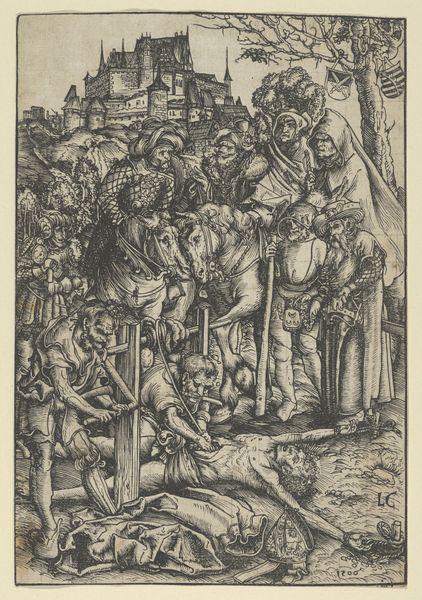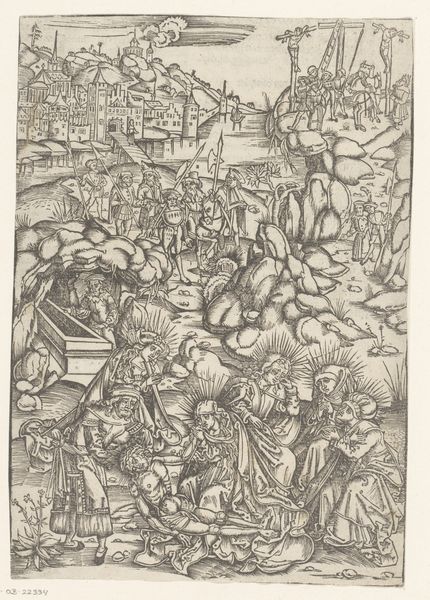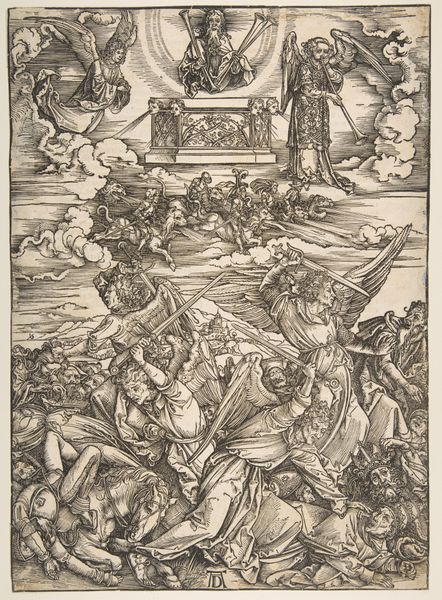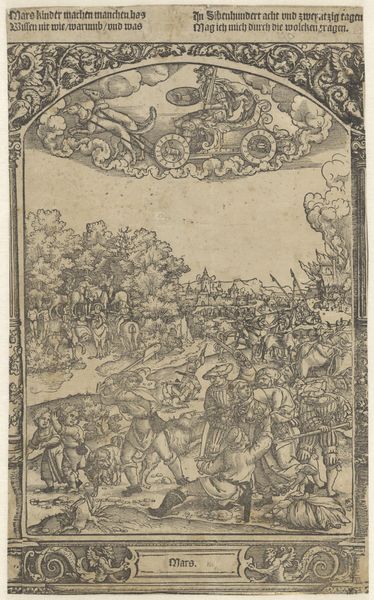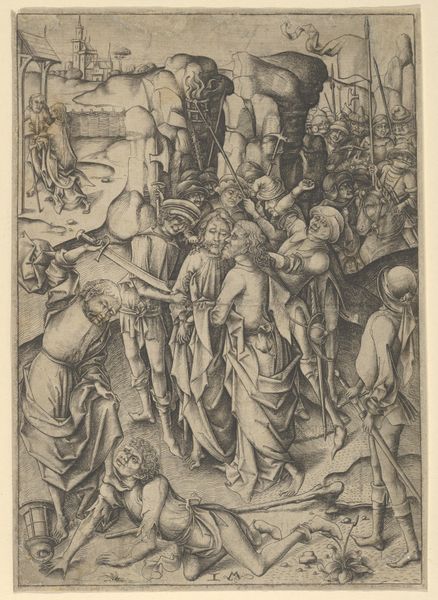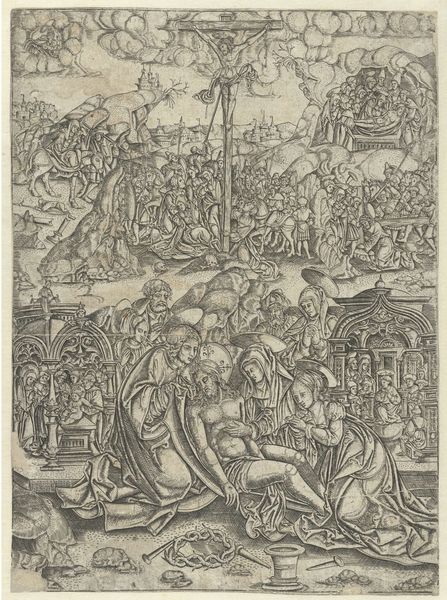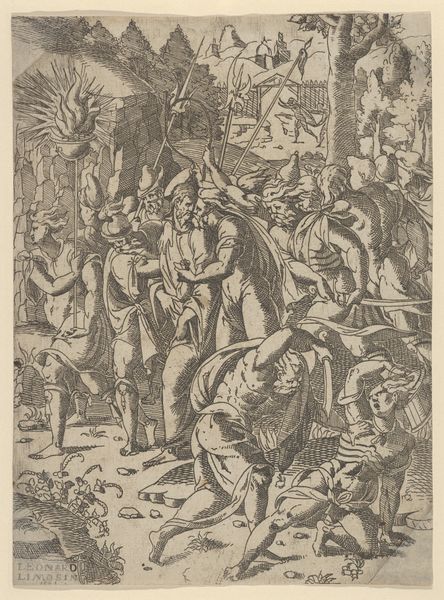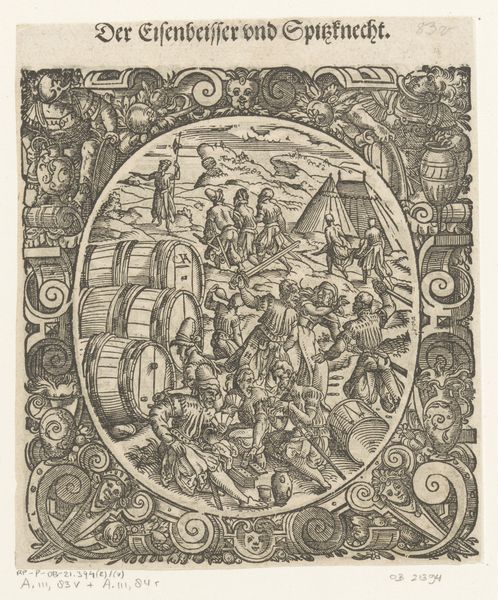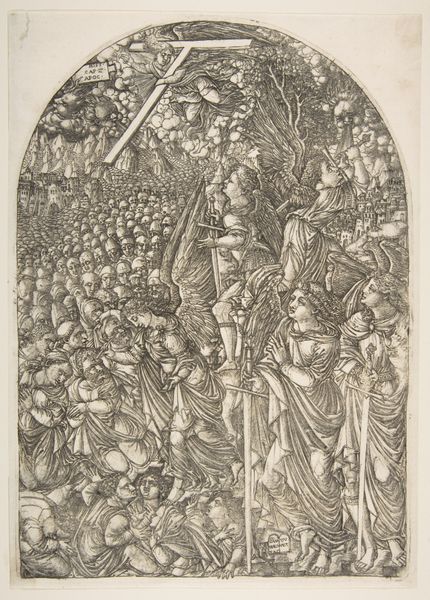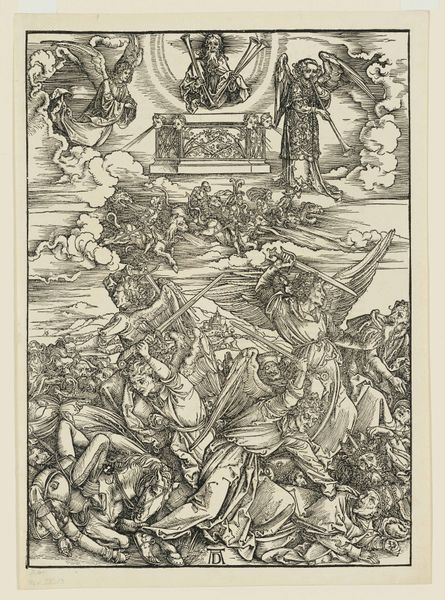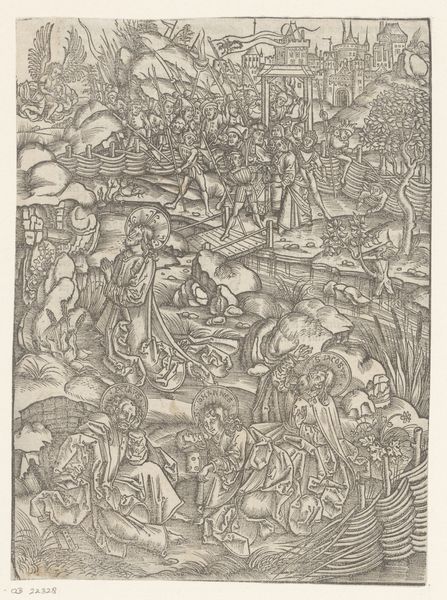
drawing, print, ink, engraving
#
drawing
#
pen drawing
# print
#
figuration
#
ink line art
#
ink
#
line
#
northern-renaissance
#
engraving
Dimensions: height 240 mm, width 156 mm
Copyright: Rijks Museum: Open Domain
Curator: Today, we're looking at "The Assumption of Mary," an engraving attributed to Hans Lützelburger, created sometime between 1502 and 1510. Editor: Wow, it’s… busy! Like a Renaissance Where's Waldo, but everyone's having a really intense religious experience. It's incredibly detailed, though, even at this scale. Curator: Indeed. Lützelburger employs a remarkable linework technique here. Note the density of the hatching to create areas of deep shadow, juxtaposed with the relative lightness of the figures in the heavenly realm. Consider the symbolic weight carried by these stark contrasts. Editor: The figures below, the earthly witnesses... They all seem so stunned, reaching out, mouths agape. Then, above, it’s a whirlwind of angels, and Mary being swept upwards. It really captures that moment of miraculous transition, the boundary dissolving. Curator: Observe the orthogonals created by the architectural elements, which draw the eye upward. This visual strategy emphasizes the vertical axis, directing the viewer’s gaze toward the divine sphere, underscoring the theme of ascension central to the work. Editor: I keep coming back to those little faces in the clouds at the very top. They look almost… judgmental? Like they’re peering down, scrutinizing everything. Maybe they represent divine authority, but they also inject a little unease into the scene. Curator: An astute observation. The use of text, rendered in banners that frame the composition, further anchors the image within a specific cultural and intellectual context, reminding us of the interplay between the visual and the textual in early print culture. Editor: You know, for something so intensely religious, there’s a real earthiness to it, especially in the faces of the people. They're not idealized; they're real people, experiencing something incomprehensible. Curator: That juxtaposition, between the grounded realism and the fantastical ascent, I believe is precisely where Lützelburger’s mastery resides. It compels a prolonged meditation on faith, perception, and the liminal space between the human and the divine. Editor: Absolutely. It’s more than just a depiction of a biblical story, it's about the tension and the mystery held in belief. Okay, I get it now; this piece really resonates on multiple levels.
Comments
No comments
Be the first to comment and join the conversation on the ultimate creative platform.
